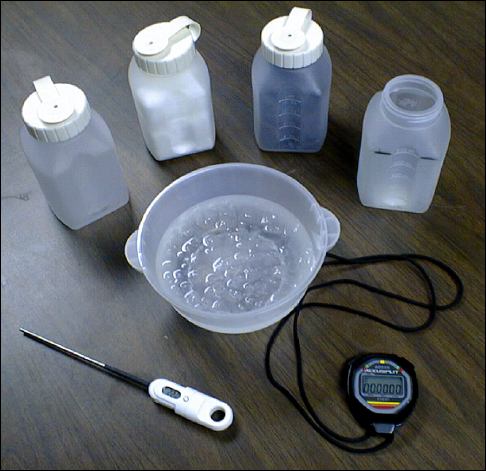
Background:
Jefferson Lab's accelerator uses niobium cavities to accelerate electrons. In order for the cavities to operate correctly, they must be cooled to very low temperatures. The cavities are bathed in liquid helium, which keeps them at a temperature of 2 K (-456°F), inside large thermos bottles called cryomodules. Cryomodules are designed to stop the three ways heat moves: conduction, convection and radiation.
Insulators are materials that prevent the flow of heat. In this experiment, three different materials are tested to see how well they insulate.
Objectives:
In this activity students will:
- work in groups
- be responsible for specific tasks within their group
- measure liquid
- measure time using a stopwatch
- measure temperature change over time
- record data
- test and compare the effectiveness of different insulators
- create a line graph to depict the temperatures recorded at 30 second intervals using each insulator
Minimum Materials Needed for Each Student Group:
- Long stem Celsius thermometer capable of reading temperatures from room temperature (~25°C) to 0°C
- Stopwatch
- A 1 pint container (with lid) filled with air
- A 1 pint container (with lid) filled with cotton
- A 1 pint container (with lid) filled with steel wool
- Bowl with a capacity of 750 milliliters
- 500 milliliters of ice water
Optional Materials:
- A marked container to measure the ice water

Materials for Cold Stuff
Pre-Activity Preparations:
The Pint Containers
1. Remove all labels.
2. Drill a hole near the center of the lid just large enough for the thermometer to fit into.
3. Fill each container with the desired insulator.
Notes:
- Wrap a piece of tape around the stem of the thermometer to prevent it from touching the bottom of the container.
Citation and linking information
For questions about this page, please contact Carol McKisson.
